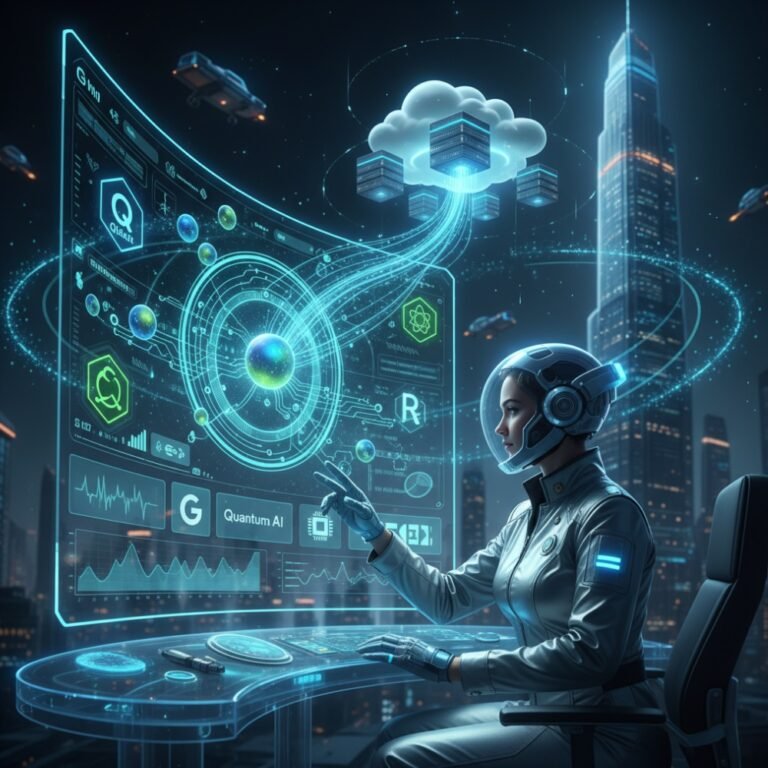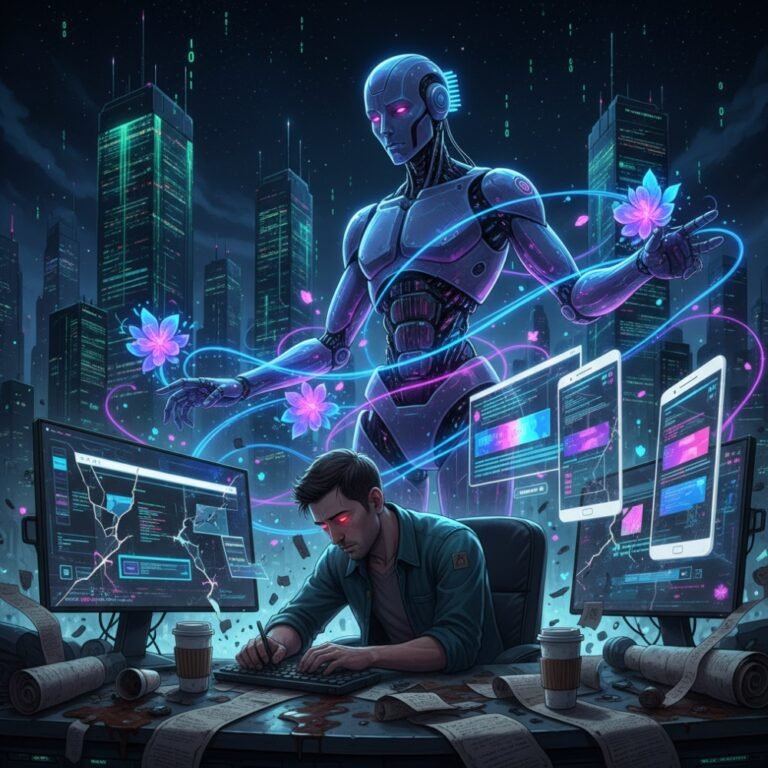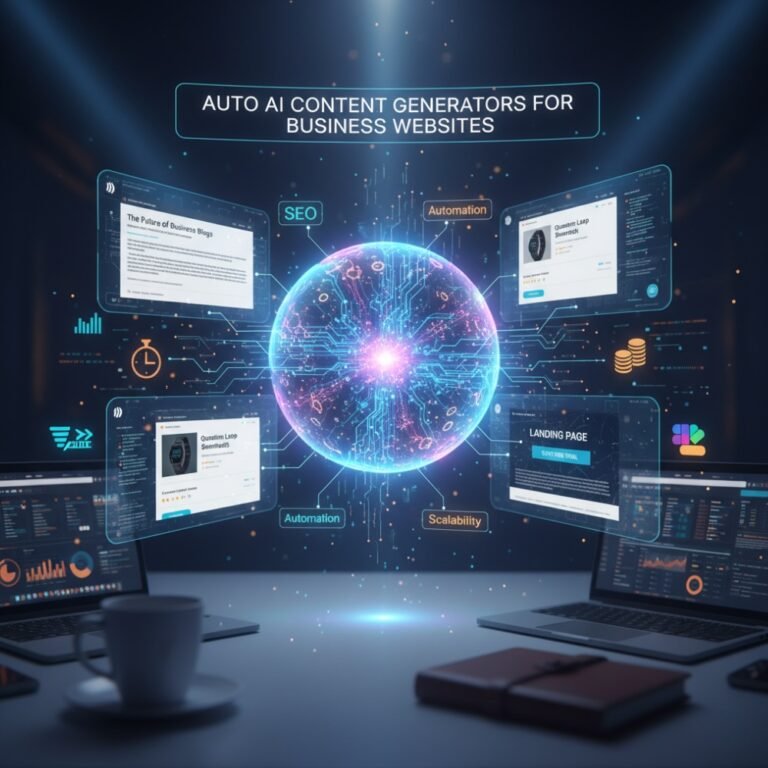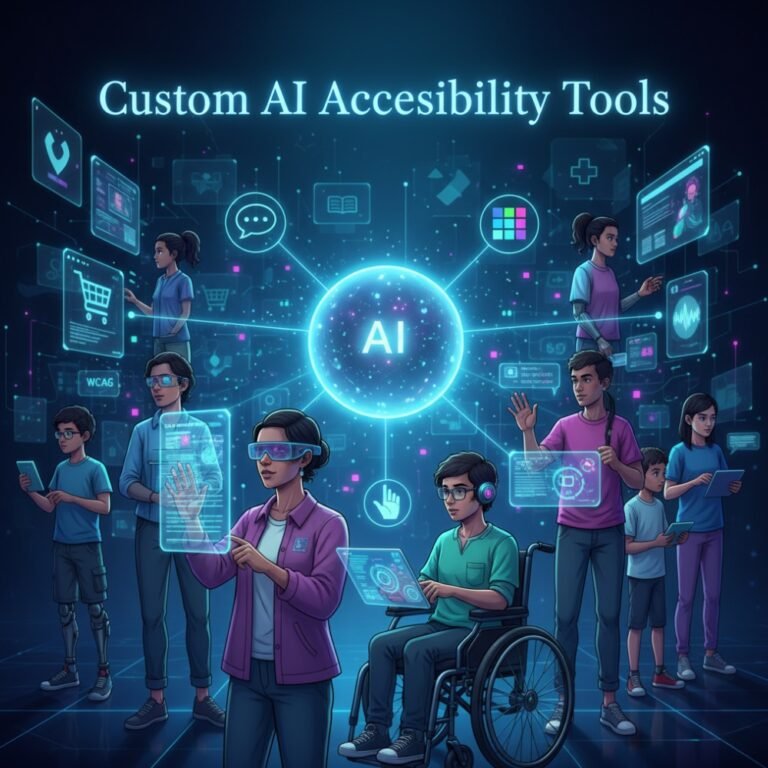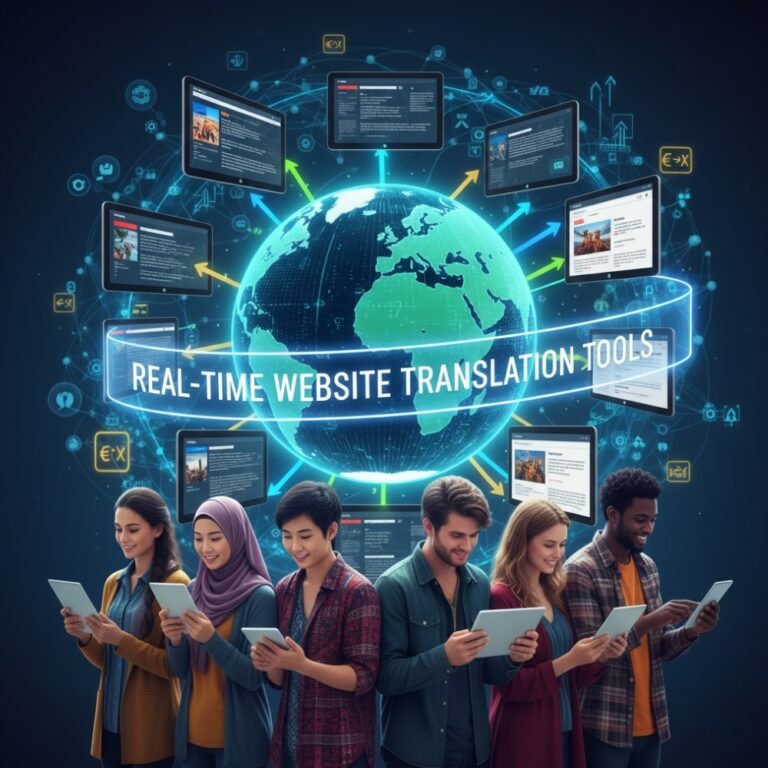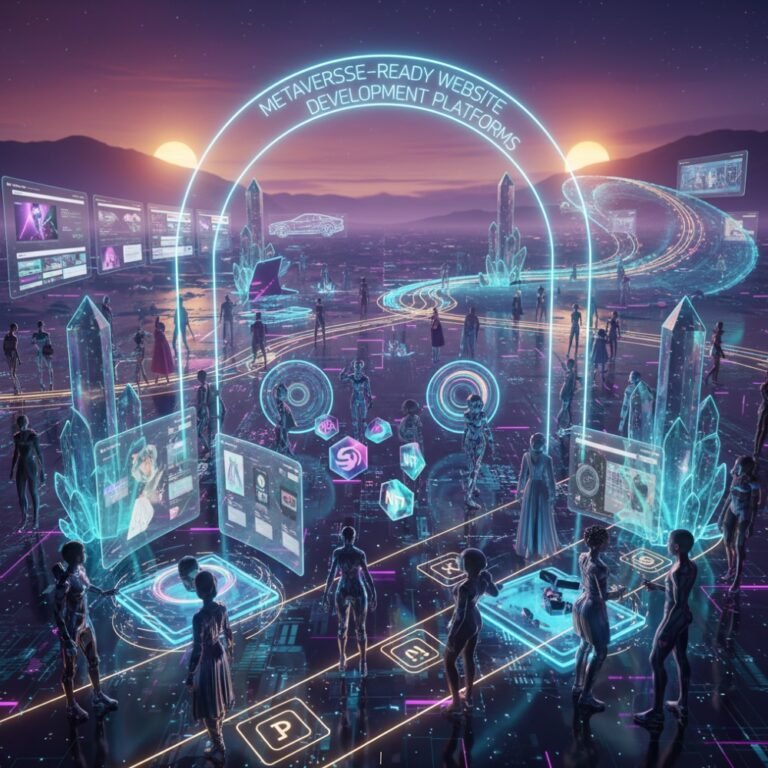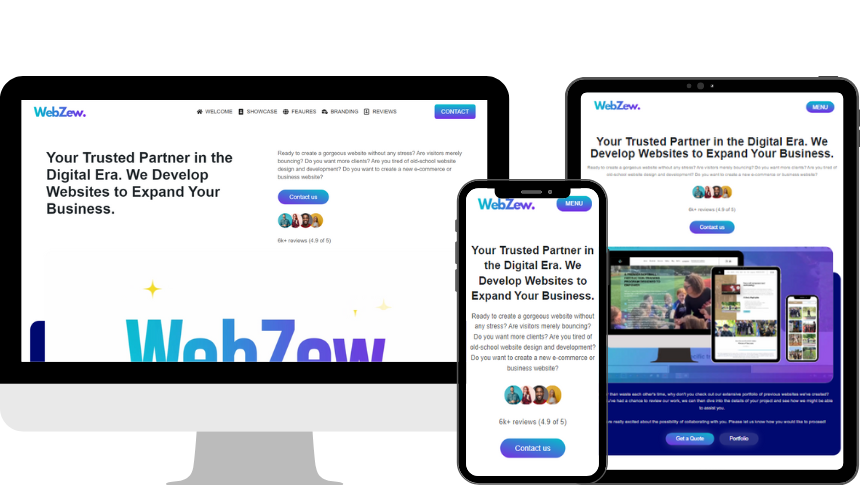How VR and AR Will Shape the Future of Websites
Imagine browsing a website where you don’t just scroll through flat images—you step inside a virtual showroom, trying on clothes or exploring a holiday destination as if you were really there. Sounds like science fiction? It’s not. Virtual reality (VR) and augmented reality (AR) are already turning static web pages into dynamic, immersive worlds. As we move from traditional 2D interfaces to these interactive realms, the web is evolving faster than ever.
Gone are the days when websites were mere collections of text and photos. Today, they’re becoming gateways to experiences that blend the digital and physical. This shift isn’t just about flashy tech; it’s about creating meaningful connections that keep users coming back. Whether you’re a business owner, developer, or curious user, understanding VR and AR in web development could redefine how you interact online.
Why are VR and AR the next frontier for web design? Simply put, they offer unparalleled immersion. In a world where attention spans are shrinking, these technologies captivate users, boosting engagement and loyalty. With advancements in hardware and software, integrating them into websites is becoming more accessible. But what does this mean for the future? Let’s dive in.
What is VR and AR in Web Development?
Definitions and Differences Between VR and AR
Virtual reality (VR) immerses you in a completely simulated environment, shutting out the real world. Think of slipping on a headset and wandering through a 3D digital space—everything around you is computer-generated. It’s like being transported to another place entirely.
Augmented reality (AR), on the other hand, overlays digital elements onto the real world. Using your smartphone camera, you might see virtual furniture in your living room or try on virtual makeup. The key difference? VR replaces reality, while AR enhances it. Both are powerful for web development, but they serve distinct purposes: VR for full escapism, AR for practical overlays.
Role of WebVR, WebAR, and WebXR Technologies
WebVR was an early standard for delivering VR experiences directly in browsers, but it’s evolved. WebAR brings AR to the web without needing apps, allowing instant interactions via links. Now, WebXR combines both, providing a unified API for immersive content across devices. This makes it easier for developers to create cross-compatible experiences, from desktops to headsets.
Tools like A-Frame simplify VR/AR building by wrapping around Three.js, a JavaScript library for 3D graphics. Babylon.js adds advanced features for AR sessions, ensuring smooth performance. These technologies democratise immersive web design, letting even small teams craft sophisticated sites.
The Rise of Immersive Web Experiences
Examples of VR/AR Already Integrated into Websites
VR and AR aren’t futuristic dreams—they’re live on many sites today. In e-commerce, some retailers offer AR apps that let you place furniture in your home, reducing returns by visualising fits. Beauty brands provide virtual try-on for cosmetics, boosting confidence in purchases.
Real estate platforms use VR tours, allowing remote walkthroughs of properties. In education, AR overlays bring historical sites to life, making lessons interactive. Tourism benefits too—virtual previews of hotels or landmarks draw in travellers. These integrations show how VR/AR turn passive browsing into active exploration, making websites stickier.
Current Adoption Trends and Statistics
Adoption is surging. The global AR/VR market is projected to hit $89.82 billion in 2025, up from $62.75 billion in 2024, with a 31.6% CAGR. By 2030, user numbers could reach 3.8 billion, with 54.1% penetration in 2025. In web development, AR integrations rose 45% in 2025, driven by AI enhancements. Active VR users are expected to hit 216 million by year’s end. Trends include AI-powered personalisation and 5G support, making immersive web experiences more seamless. Businesses are jumping in, with 75% of global brands planning AR/VR for marketing by 2026.
🕶️ VR (Virtual Reality) in Websites
How VR Will Transform Websites
VR turns websites into 3D environments where navigation feels natural—like walking through a virtual museum. Instead of clicking links, you might gesture to explore rooms. This transforms product demos: imagine test-driving a car in a simulated cityscape right from a manufacturer’s site.
Interactive storytelling shines here too. Brands can craft narratives where users influence outcomes, like choosing paths in a virtual adventure. It’s not just engaging; it builds emotional connections, making websites memorable hubs rather than info dumps.
Case Studies: VR in E-Commerce, Tourism, Education
In e-commerce, some platforms create VR shopping malls, letting users browse virtual stores, increasing dwell time by 75% in trials. Tourism sees wins with VR previews of landmarks, boosting bookings by 20%. Education platforms use VR simulations for science labs, improving retention by 30% over traditional methods. These cases highlight VR’s power to simulate real-world scenarios, driving better outcomes.
Challenges of Implementing VR in Web Design
Despite the excitement, hurdles exist. Device compatibility is key—not everyone has VR headsets, limiting reach. Performance issues like lag can ruin immersion, especially on lower-end hardware. Costs are high: developing 3D content requires specialised skills, pushing budgets up. Accessibility barriers, such as motion sickness or exclusion of disabled users, need addressing. Overcoming these involves optimising for web standards and testing across devices.
📱 AR (Augmented Reality) in Websites
How AR Will Transform Websites
AR brings magic to everyday browsing. Try-on features in fashion let you see clothes on your body via webcam, while furniture sites overlay items in your space. Interactive visualisations make complex products tangible. For local businesses, AR enhances maps with virtual previews—think seeing a restaurant’s menu pop up in real-time directions. It bridges digital and physical, making websites more useful in daily life.
Benefits of AR for Businesses and Users
AR skyrockets engagement: users spend 20% more time on sites with it. Conversion rates jump 90% for AR interactors versus non-users. Personalisation thrives, tailoring experiences to user preferences. It bridges online-offline gaps, like virtual try-ons reducing returns by 30%. For businesses, this means higher loyalty; for users, more confident decisions. Overall, AR fosters deeper connections.
🌐 The Future of Website Design with VR & AR
Web Technologies Driving VR/AR
WebXR leads the charge, enabling seamless VR/AR in browsers. A-Frame makes 3D scenes easy for web devs, building on Three.js for rendering. Babylon.js handles complex interactions, ideal for AR features. 5G and edge computing are game-changers, reducing latency for real-time experiences. They enable high-quality streaming, making immersive web accessible outdoors. AI integration adds smart personalisation, like adaptive environments.
User Experience (UX) in the VR/AR Web
Designing for immersion means prioritising natural interactions—gestures over clicks. Keep interfaces intuitive to avoid disorientation. Best practices include haptic feedback for realism and multisensory elements. Test for comfort, minimising motion sickness. Embrace spatial design: place elements in 3D space logically. The goal? Seamless blends of tech and human intuition.
SEO for VR and AR Websites
Immersive sites can boost rankings by increasing dwell time and shares. But optimise 3D content with descriptive metadata for crawlers. Voice search fits AR/VR naturally—use natural language keywords. Visual search grows; tag AR elements for image recognition. AR SEO involves local optimisations, like geo-tagged overlays. Future-proof by integrating with emerging search tech.
Predictions for the Next Decade
Will VR websites replace traditional ones? Not entirely, but they’ll dominate experiential niches. The metaverse will integrate web experiences, creating interconnected virtual worlds. By 2030, AR/VR could add $1.5 trillion to the economy. Expect more compact hardware and AI-driven content. Businesses will find opportunities in personalised, immersive marketing—think virtual events becoming standard.
❓ FAQ Section
What is VR in Websites?
VR in websites creates fully immersive 3D environments accessible via browsers or headsets. It allows users to navigate and interact as if in a physical space, transforming static pages into dynamic experiences.
How Does AR Improve E-Commerce Websites?
AR enhances e-commerce by offering virtual try-ons and visualisations, reducing returns and boosting conversions by up to 90%. It personalises shopping, increasing engagement and confidence.
Can Any Website Use VR and AR?
Yes, but it depends on goals and resources. Start with WebXR for compatibility. Small sites can add simple AR features, while complex VR suits experiential brands. Challenges like costs exist, but tools make it feasible.
What Technologies Power VR/AR Websites?
Key tech includes WebXR for immersion, A-Frame and Three.js for 3D building, and Babylon.js for interactions. 5G and edge computing enable smooth delivery.
What is the Future of VR/AR in Web Design?
The future sees widespread adoption, with metaverse integration and AI enhancements. Expect more immersive, personalised experiences, potentially reshaping how we design and use websites by 2030.


